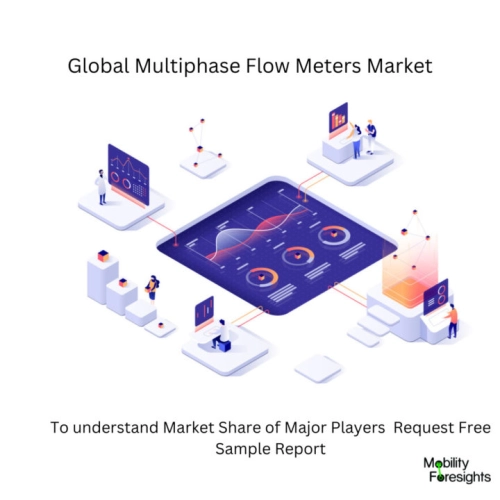
- Get in Touch with Us

Last Updated: Apr 25, 2025 | Study Period: 2024-2030
A multiphase flow metre is a device used to measure the individual phase flow rates of constituent phases in a given flow. In an increasing number of applications related to oil production, multiphase flow metres are being used to give well test data.
These include topside applications that reduce platform space and load requirements for well testing, applications in remote or unmanned sites, and subsea applications that do not require pricey well test lines.
Oil, water, and gas flow rates in a multiphase flow are measured with multiphase flow metres (MPFM). Metering of moist gas streams is also referred to as MPFM.
Since the producing wells often produce a mixture of liquid and gaseous hydrocarbons with a variable amount of water, multiphase streams are typical of oil and gas fields.

The Global Multiphase Flow Meters market accountedfor $XX Billion in 2023 and is anticipated to reach $XX Billion by 2030, registering a CAGR of XX% from 2024 to 2030.
A multiphase flow metering solution, according to ARC, is one that can measure three or more non-homogenous phase fluids, such as water, oil, and gas in both their wet and dry forms.
The following primary multiphase flow regimes are recognised when defining the flow seen in oil and gas wells: annular mist flow, smooth stratified flow, wavy stratified flow, plug flow, and slug flow.
Early multiphase flow metering advances started in the early to mid-1990s as end customers searched for more economical and effective ways to carry out well testing, well monitoring, production allocation, and other tasks.
Suppliers and associated stakeholders have been collaborating over the past 20 years to create more precise, dependable, and efficient solutions to the problems associated with monitoring multi-component phase flow.
The most popular multiphase flow metering method uses the Venturi tube with differential pressure sensors to measure flow rate, along with another method like gamma ray attenuation to determine the fluid's density and composition as well as the mass/volume fractions of oil, gas, and water.
Multiphase flow metering methods typically combine at least three or more different sensing technologies. Some providers even rely on using capacitance and conductance data for array cross-correlation since capacitance sensors perform best in continuous flows of oil while conductivity sensors perform best in continuous flows of water.
| Sl no | Topic |
| 1 | Market Segmentation |
| 2 | Scope of the report |
| 3 | Abbreviations |
| 4 | Research Methodology |
| 5 | Executive Summary |
| 6 | Introduction |
| 7 | Insights from Industry stakeholders |
| 8 | Cost breakdown of Product by sub-components and average profit margin |
| 9 | Disruptive innovation in the Industry |
| 10 | Technology trends in the Industry |
| 11 | Consumer trends in the industry |
| 12 | Recent Production Milestones |
| 13 | Component Manufacturing in US, EU and China |
| 14 | COVID-19 impact on overall market |
| 15 | COVID-19 impact on Production of components |
| 16 | COVID-19 impact on Point of sale |
| 17 | Market Segmentation, Dynamics and Forecast by Geography, 2024-2030 |
| 18 | Market Segmentation, Dynamics and Forecast by Product Type, 2024-2030 |
| 19 | Market Segmentation, Dynamics and Forecast by Application, 2024-2030 |
| 20 | Market Segmentation, Dynamics and Forecast by End use, 2024-2030 |
| 21 | Product installation rate by OEM, 2023 |
| 22 | Incline/Decline in Average B-2-B selling price in past 5 years |
| 23 | Competition from substitute products |
| 24 | Gross margin and average profitability of suppliers |
| 25 | New product development in past 12 months |
| 26 | M&A in past 12 months |
| 27 | Growth strategy of leading players |
| 28 | Market share of vendors, 2023 |
| 29 | Company Profiles |
| 30 | Unmet needs and opportunity for new suppliers |
| 31 | Conclusion |
| 32 | Appendix |